So I've received quite a few requests to start a thread about this car, and I'm finally doing it today since I have almost nothing else to do :-D.
Its the story of my homegrown turbo setup and how it came to be. What follows is quite long and boring at times so be warned.
It all started back in January after driving scooby's Subaru STi. The torque and the adrenaline rush was worlds different compared to the relative docility of a stock 1.6 Miata (which BTW feels quite a bit senile than the race-prepped dolphin that's sitting back home in India, no not the blue one in my garage

)
So, I thought to myself, why not turbocharge it? Really, for the Miata, there's no power mod with a better price-to-performance ratio. Plus, with the available aftermarket support, anybody with half a brain can throw a kit together. I searched everything available and found nothing within my budget. And that's why I decided to put my MAD INJUNeerING sKILLz to use and do a full custom build.
The only issue was that, at the time, I lived in an apartment with no enclosed parking, so heavy fabrication or welding was out of the question.
For those few people sneering at the crudity of some of the fabrication work sitting in India, consider that there is no chotu available here to work for Rs. 50 + chai-paani a day. All work was performed by one man, me, in my apartment parking lot, sometimes in 5 deg. C weather. If I had my regular chotu guy here imagine what would have been possible.
My initial budget of $500 for the turbo proved to be a little optimistic once I scanned the forums and ebay for parts: its possible only if you're extremely lucky, or if you can live with compromise. I don't have either luxury, so I quickly doubled the budget to $1000. In the grand scheme of things, this is very very cheap because an aftermarket kit of equal performance can cost twice to three times that amount.
I started with a design philosophy. Throttle response and engine flexibility were of paramount importance because this car is meant to fly on the track, not live life quarter mile at a time. Scalability was very important, as I'm fairly human in nature and keep wanting more after a while. I wanted a good streetable setup with excellent performance during autocross too. I could later upgrade it if I felt the need to beat that Corvette on the track (don't laugh, it can and has been done).
With that, I laid out some goals, limited only by my financial capability to replace broken differentials and gearboxes at the time:
200 bhp peak power
Full boost by 2000 rpm
Flat torque curve between 2500 and 5500 rpm for auto-x purposes.
Turbo choice was therefore very important. After a lengthy discussion on MT.net, and my own analysis of different compressor maps, I zeroed in on the TD04-13T turbo from a 02+ Subaru WRX. Although very few people have been known to use this turbo (I can count them on one hand with fingers to spare), my analysis was validated by a couple of dyno charts I saw online. 200 bhp was well within reach at less than 0.7 bar boost. This turbo is really a wonderful piece of modern turbocharger practice, a hybrid-turbo straight from the factory: it is a fast response, low inertia, oil+water cooled, and flows well over 350 CFM of air, i.e. worth 250-300 bhp mated to the right engine.
Shopping started with the turbocharger which I found on a subaru forum for less than $150. Then I found a guy on the local forum who was selling a custom manifold built specifically for this turbo. Imagine the odds!!
With the major components out of the way, I pieced together all the major bits over a 3 month period, scrounging the local forums, ebay and other car forums like a crow :-D. MAN that was intense. This was what I had at the end:
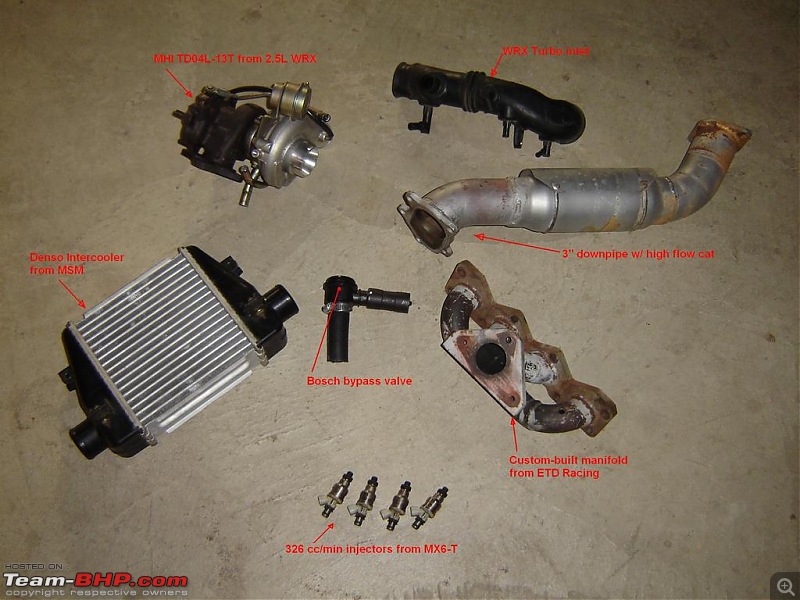
Of course, some parts were not used, like the intercooler and downpipe. I ended up using a Mazda MX6 intercooler and some used miata-specific charge pipes, cause they were available for less than $100 with brand new silicone couplers . The sizing is also perfect for the hp level I intend to run. Here are some pics during the intercooler mounting phase:
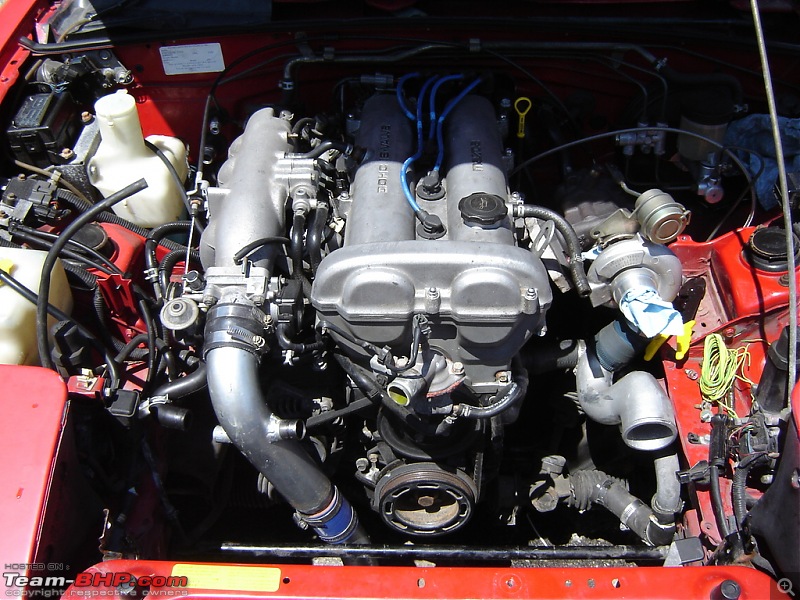
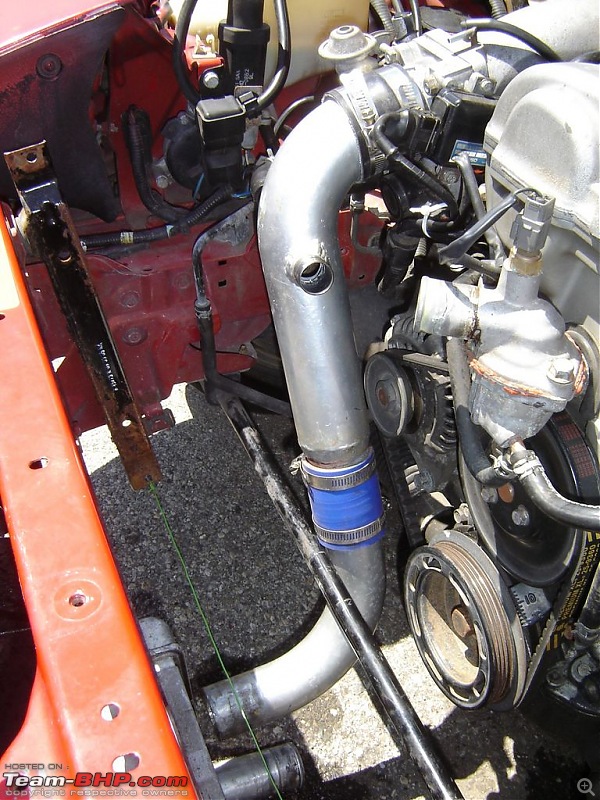
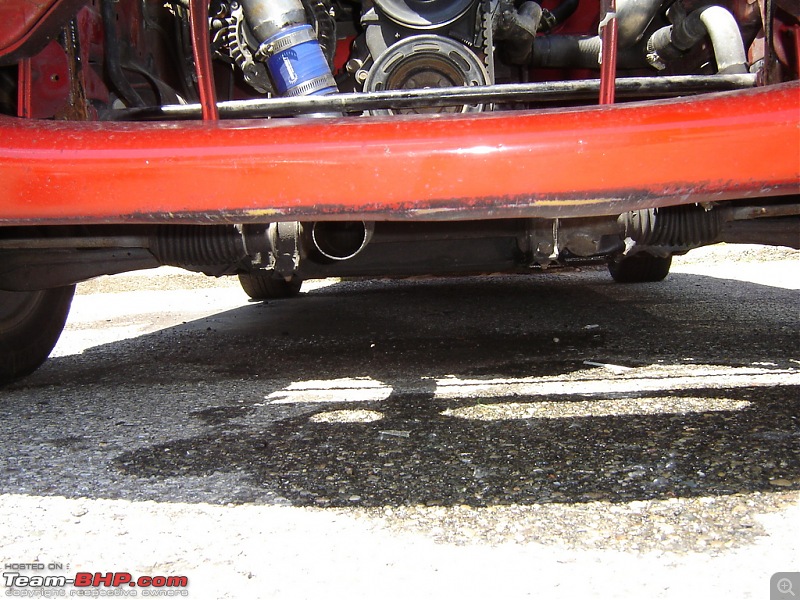
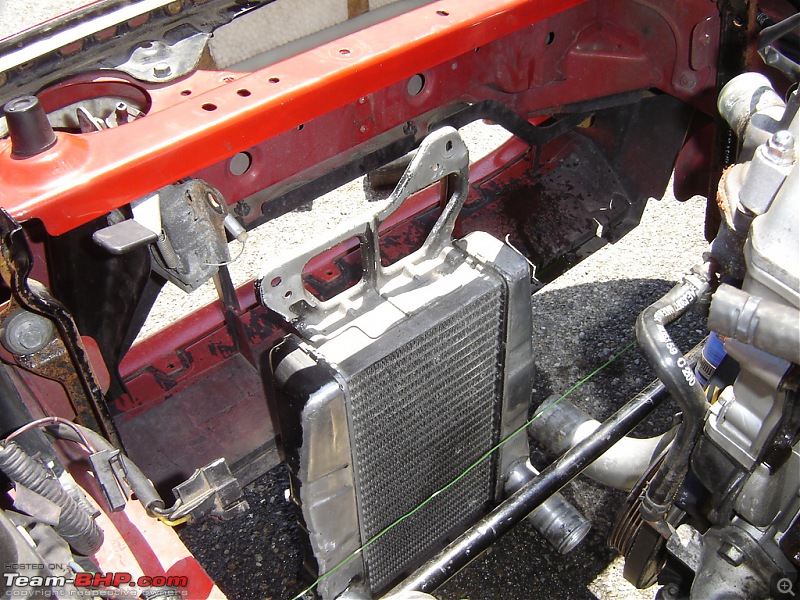
This is the final mounting:
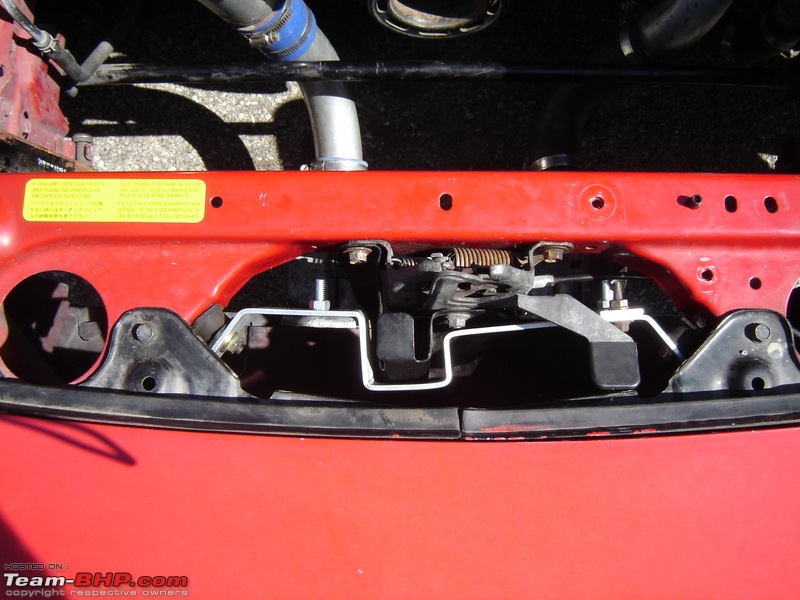
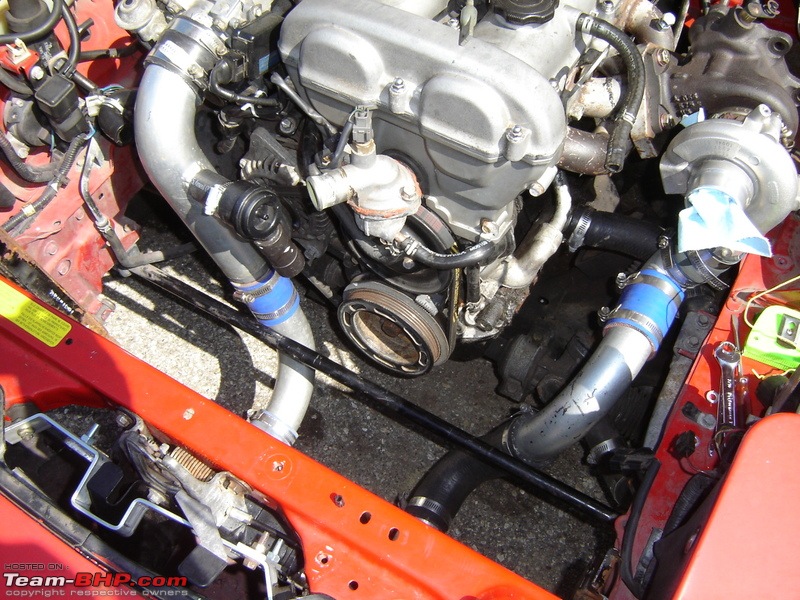
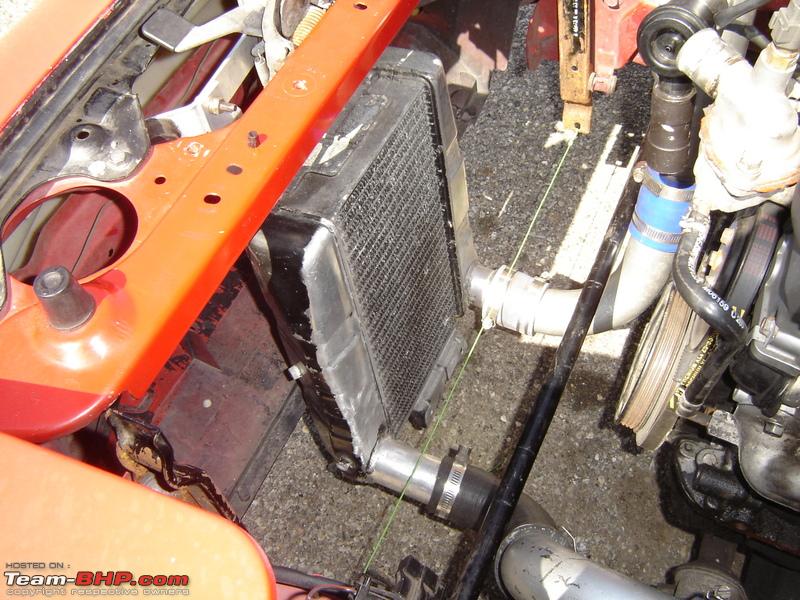
The mounting is solid and well-constrained with "give" in the right places so engine vibration wont tear the brackets apart after a couple of events. I also managed to shorten nearly 15" of the original charge pipe routing. This is a very unusual mounting technique, and is not ideal for the track due to lower ground clearance. I hope to change the entire intercooler setup once I can afford something better.
The intercooler as seen from the outside of the car, yeah I know, you can't see it

:
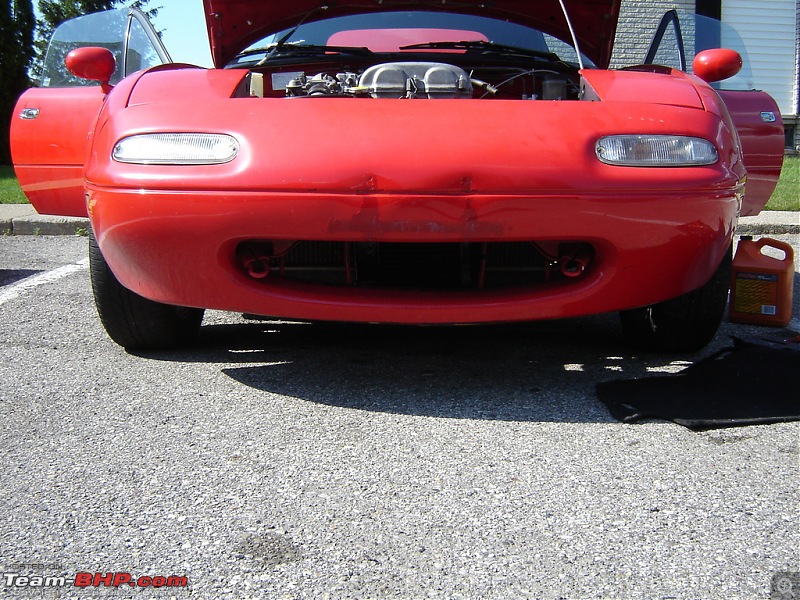
Next up was drilling and tapping the oil pan. This is a delicate and complex process, specially when lying under a car while holding a hand drill with an oversized bit in it. You have to be real careful not to hit the oil pickup tube which is placed right where you break through the metal. If you do, the oil pressure drops to 0 psi and the engine has to be taken out for it to be replaced.
But I simply used some PTFE lubricant, and drilled a pilot hole, VOILA done in 15 minutes:
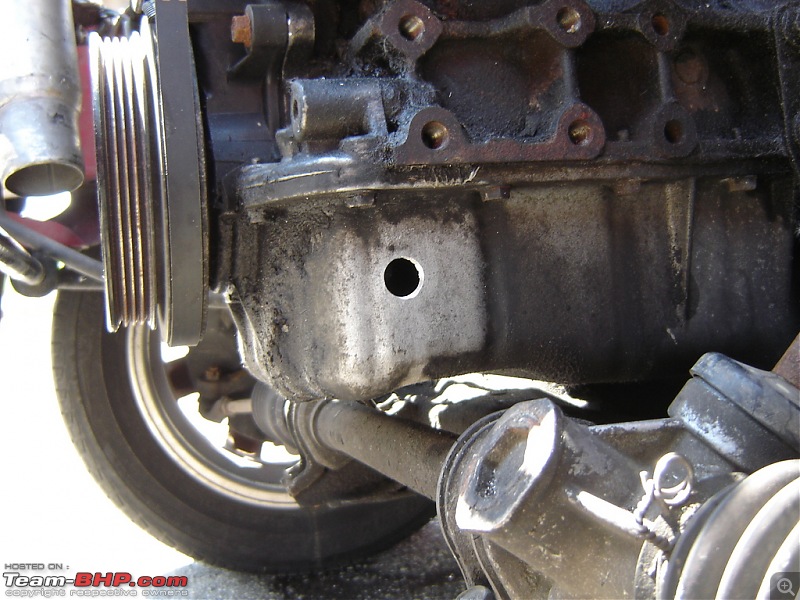
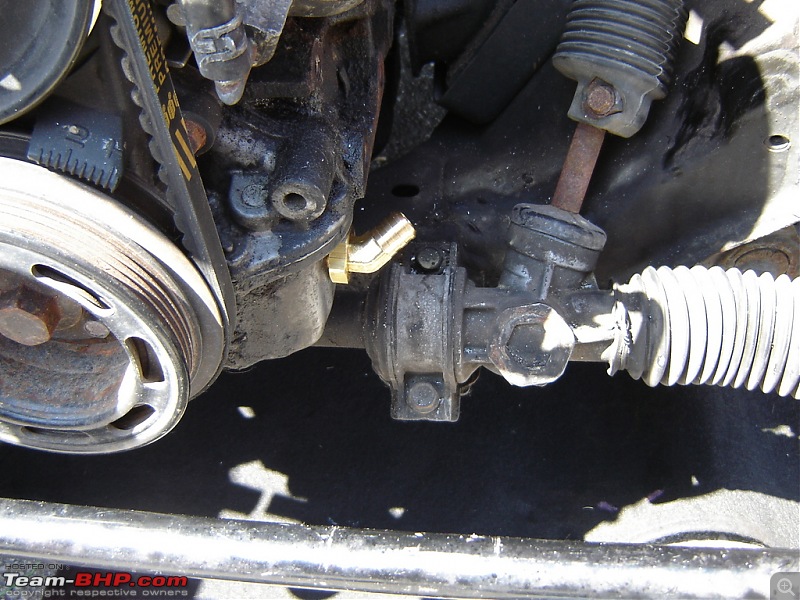
I sanded and painted the manifold with BBQ spray paint. Quite a useless chore as I have found it flaking after barely 500 miles of use:
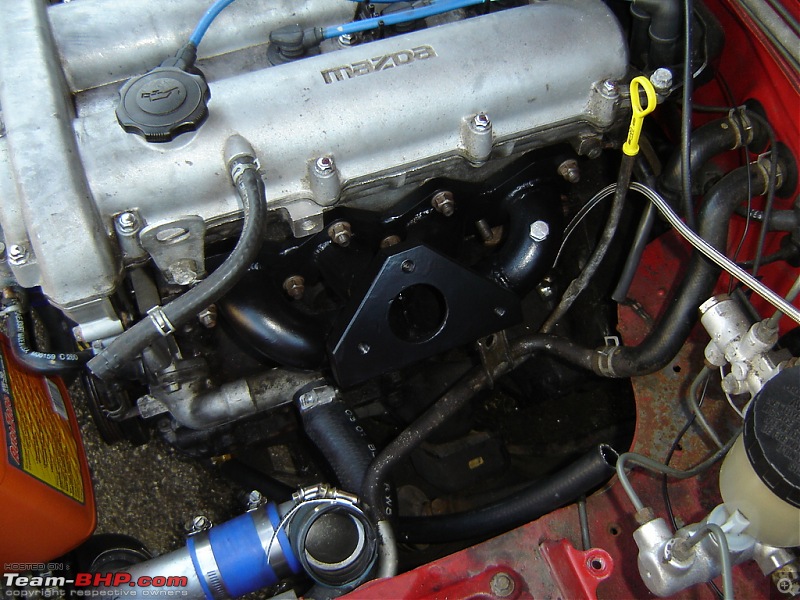
I mocked up the downpipe and tacked it with the help of a local forum member. I tuned his ECU so in exchange got him to tack weld my downpipe. In the parking lot. With a 50 ft. extension cord from my apartment :-D. Yeah, I've been called crazy hardcore a couple times before.
It is a 2.25" standard flanged, mild-steel downpipe:
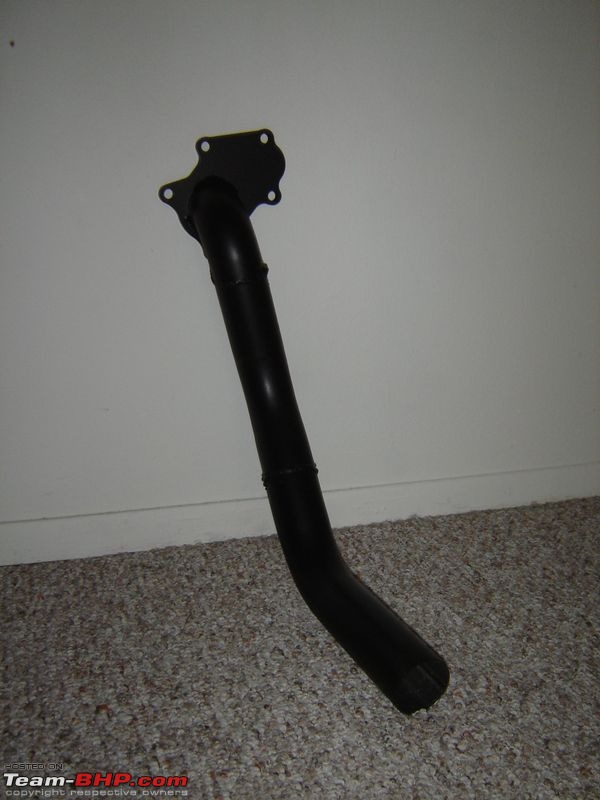
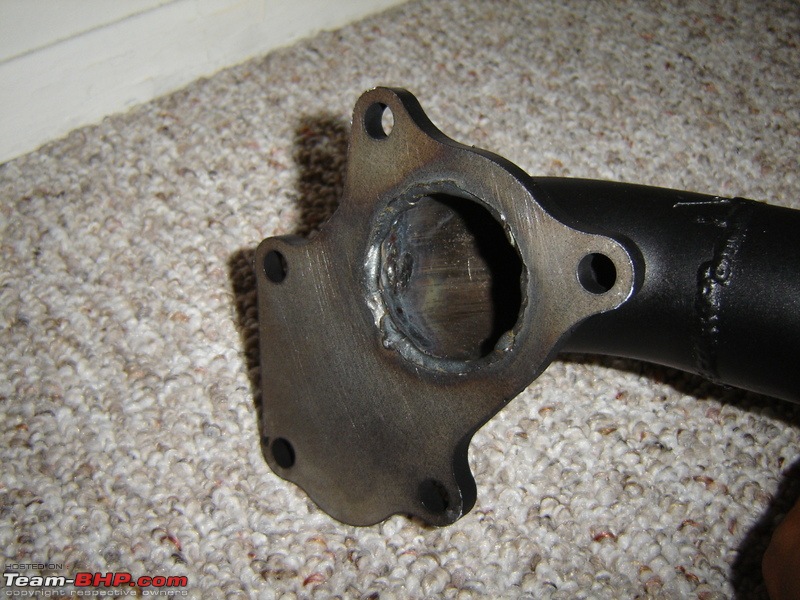
The DP is designed for two things: easy upgradability to a divorced style dump tube, and serviceability. The lower section of the downpipe has a flex section in it and goes straight to the catback (no cat). It is just fastened with a slip-on style clamp. There's no need to remove even the turbo or jack up the car to remove the downpipe, it can be pulled out straight from under the hood. And its very easy to mill the flange later for a dump tube.
I bought a used ebay exhaust for $100. Its a 2.25" SS and quite nice for the money:
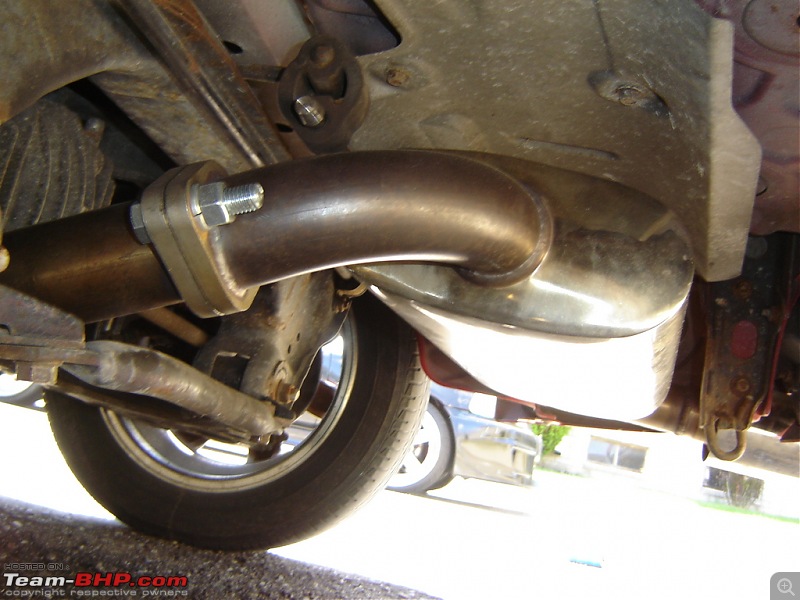
Finished it off nicely with a used $20 boost gauge. The stereo plug on the blankoff plate is the RS232 port for the standalone ECU, talk about stealth:
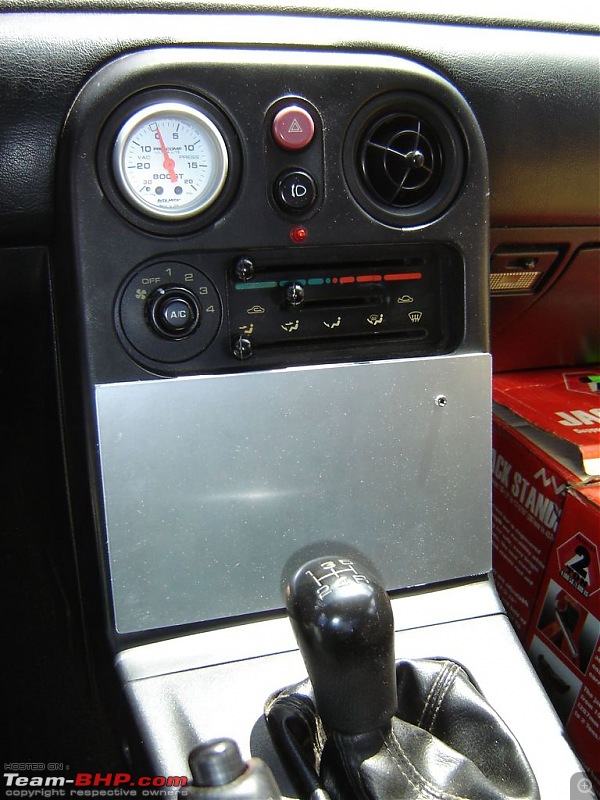
Engine bay after install:
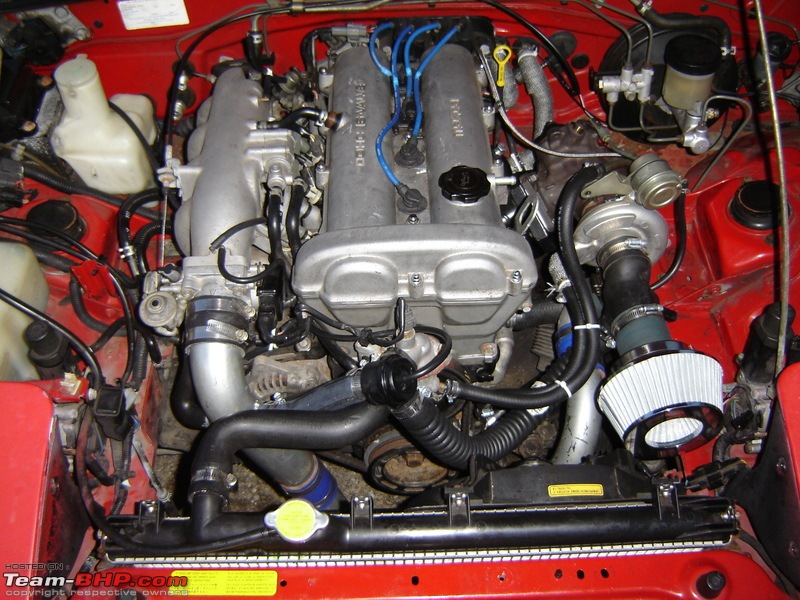
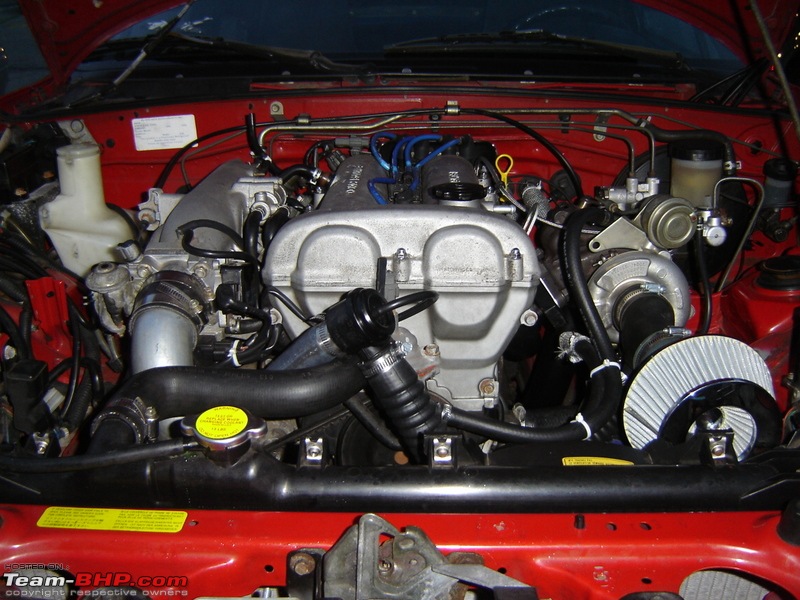
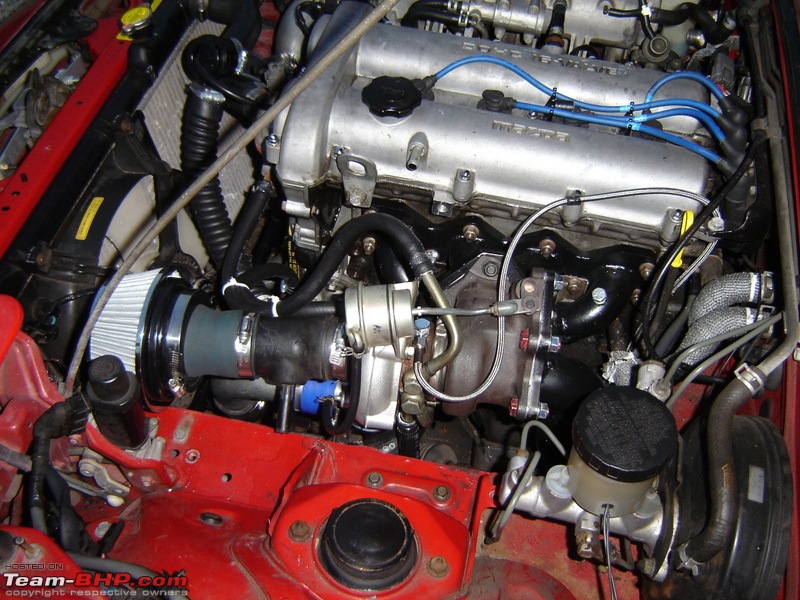
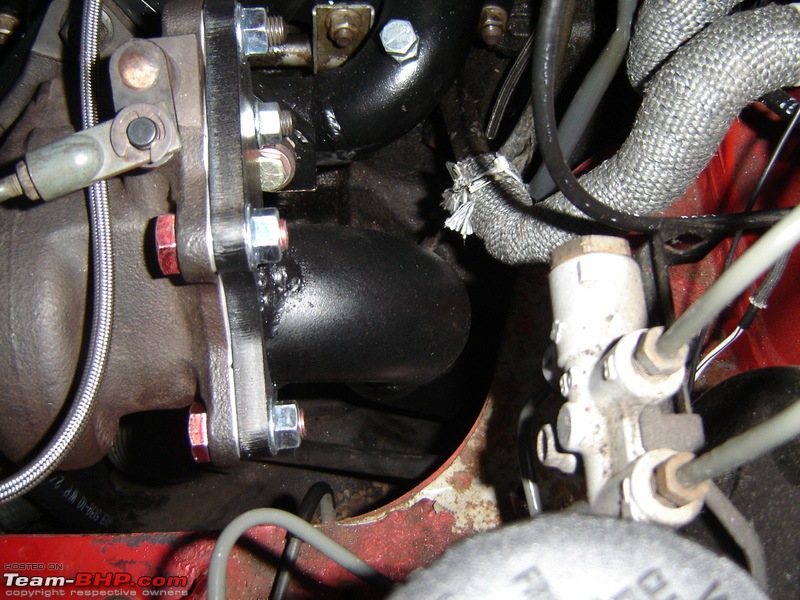
 (2)
Thanks
(2)
Thanks





 )
)







 :
:











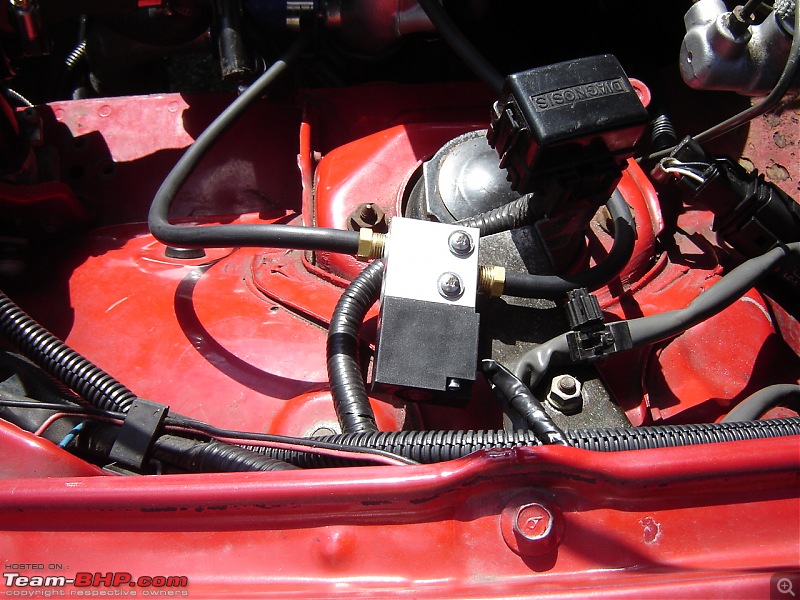

 . So that's my turbo miata story.
. So that's my turbo miata story. .
.
 that must have been some sight. Can imagine the number of weird stares you must have got from your neighbours. Btw, what did the chicks have to say (lol) ?
that must have been some sight. Can imagine the number of weird stares you must have got from your neighbours. Btw, what did the chicks have to say (lol) ?

